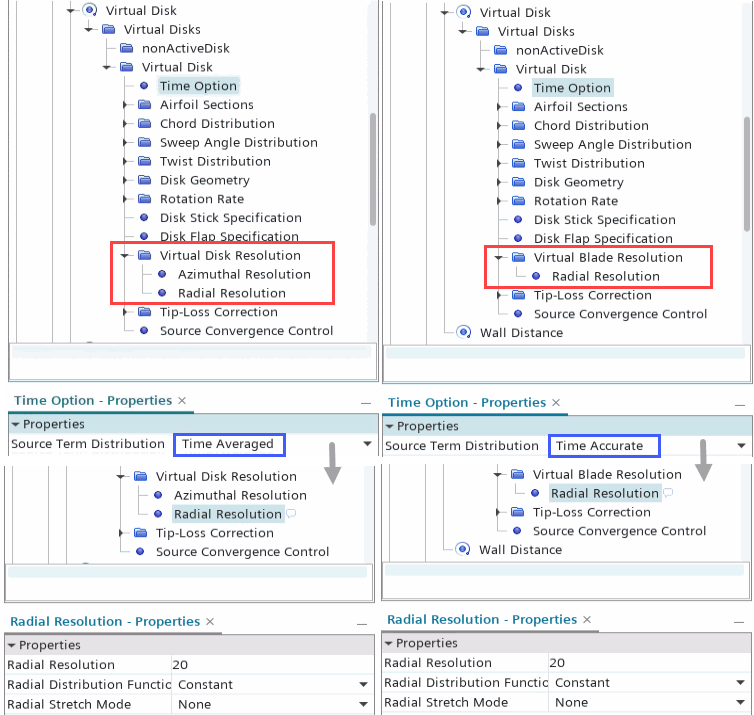Time Options Specification
The Blade Element Method supports two Time Option approaches—Time Averaged, which is the default option, and Time Accurate, which is only available for an unsteady time model.
The Time Accurate approach tracks the motion of the blades and adds source terms only at the location of the blades. By this means, the Time Accurate approach captures the time varying nature of the loads on the rotor blades and thus the time varying forces and moments. In contrast, the Time Averaged approach adds the averaged source terms over the entire rotor disk.
Both approaches require an interpolation grid:
- For the Time Average approach, the 2D interpolation grid is generated on a circular disk that covers the whole area swept by the rotating blades. You specify the azimuthal resolution and the radial resolution of this grid within the Virtual Disk Resolution node. All the volume mesh cells that fall within the circular disk area are marked to receive the source term.
- For the Time Accurate approach, a 1D interpolation grid is generated for each blade. The volume cells corresponding to the current position of the blades are marked for receiving the source term. The blade shape is always seen as a rectangle whose length is calculated from the Inner Radius and Outer Radius of the Disk Geometry node. The width is calculated as an average chord based on the defined Chord Distribution. You specify only the radial resolution along a blade within the Virtual Blade Resolution node. As the solution proceeds, the blades rotate and the cells marked for the source term are updated. Refer to Cell Marking and Interpolation Grid for more detailed method description.
The comparison is shown in the image below:

| Note | When you switch the Time Option from Time Averaged to Time Accurate for the first time, the value of Radial Resolution is kept in the node. |
For the Time Accurate approach, you are recommended to use the following guidelines for solver:
- Choose the time-step size such that the blades move 1 degree per time step.
- Use second-order temporal discretization.
- Run 10 inner iterations per time step.
In addition, you are advised to ramp the rotation rate using time steps. This is reflected in the read-only Ramp Counter of the sub-node Linear Ramp. Refer to Linear Ramp for more details.
The Time Accurate approach is appropriate for acoustic predictions of rotorcraft and when studying the unsteady interactions of drone rotors.